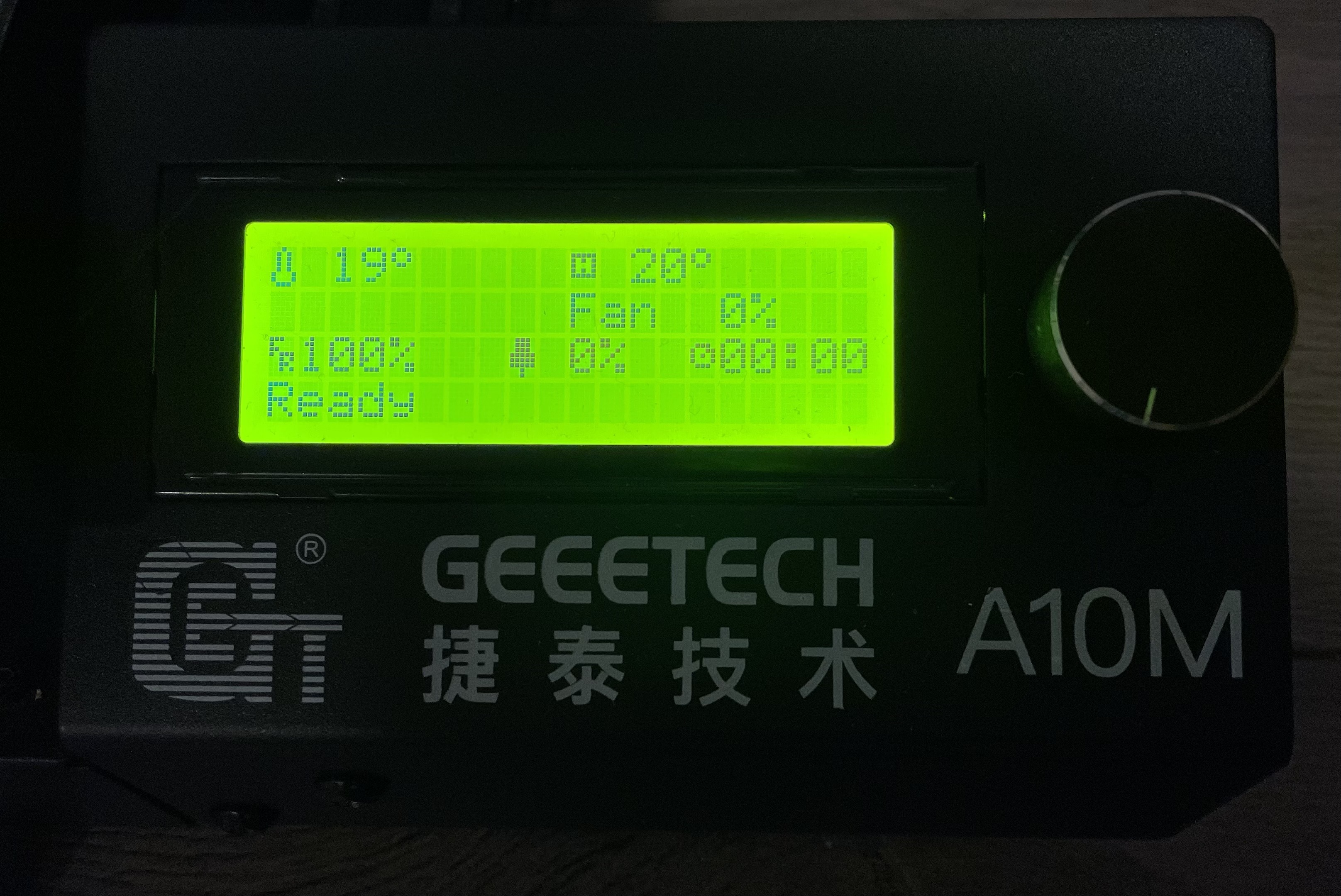A10M Display with 12-Pin Header
The printer was supplied with Marlin firmware, and the display worked correctly.
However, after switching to Klipper, the display stopped working. I even found that I’m not the first:
How to diagnose why the Geeetech A10X display shows nothing
I initially thought it was just a matter of pin definitions, so I decided to map the pins from Marlin firmware to Klipper firmware.
Using the board configuration for Geeetech A10 V4.1 and the mapping from Arduino pin numbers (e.g., 1) to AVR ports (e.g., E1)
We get the following for YHCB2004:
| #define in Marlin | Arduino # | AVR port | Schematic NET | H2 pin | Reality |
|---|---|---|---|---|---|
| YHCB2004_CLK | 5 | PE3 | LCM_D6 | 4 | CS |
| YHCB2004_MOSI | 21 | PD0 | LCM_D5 | 5 | CLK |
| YHCB2004_MISO | 36 | PC1 | LCM_D7 | 3 | MOSI |
| BTN_EN1 | 16 | PH1 | LCM_D4 | 7 | BTN_EN1 |
| BTN_EN2 | 17 | PH0 | LCM_EN | 8 | BTN_EN2 |
| BTN_ENC | 19 | PD2 | EC_PRESS | 9 | BTN_ENC |
| RESET | 11 | ||||
| BEEP | 12 | ||||
| V5 | 1 | ||||
| GND | 2,6,10 |
According to the source code, the display is based on the
AiP31068
and uses the following library for communication:
LiquidCrystal_AIP31068
In summary, the pin definitions are incorrect in Marlin firmware (they were reordered to make it work under the wrong names). See the issue in MarlinFirmware.
To make it work in Klipper firmware, it was necessary to send commands in a 9-bit format as required by the AIP31068, but the existing driver only supported 8 bits.
I solved the issue by creating a flexible SPI driver that supports any number of bits. However, it wasn’t accepted due to the risks of changing a core driver, especially since this display is rare. Kevin (the author of Klipper) proposed grouping eight 9-bit commands into nine bytes of data and sending them at once.
This solution worked, and a new driver was created and merged into Klipper.
